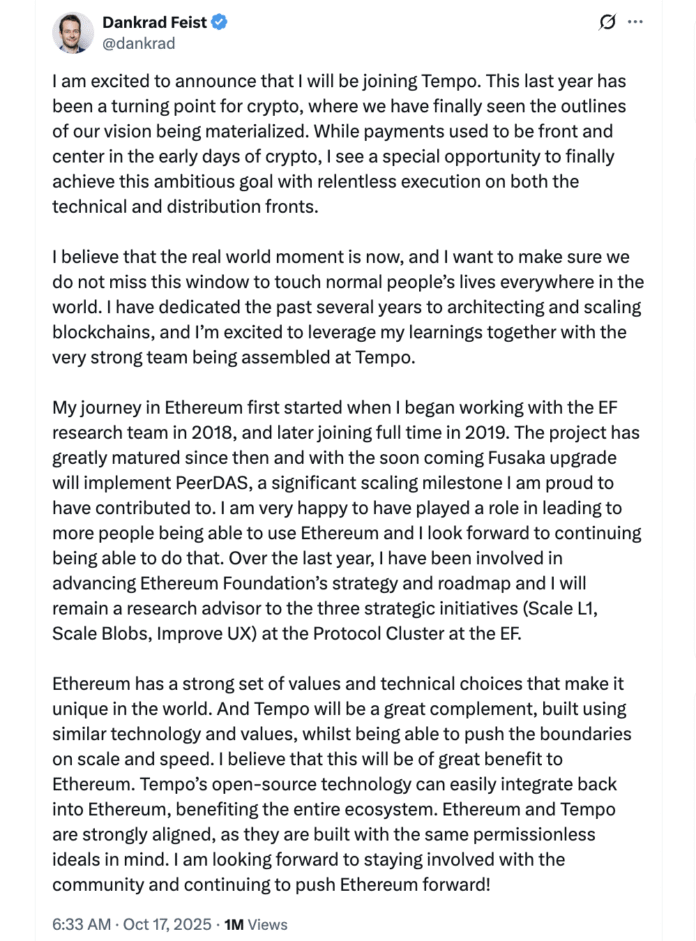The Ethereum ecosystem has witnessed a significant development with the announcement of Dankrad Feist, a veteran Ethereum developer and researcher at the Ethereum Foundation, joining Tempo, a layer-1 blockchain for payments and stablecoins. Tempo is a project developed by Stripe and Paradigm, and Feist’s move has sparked mixed reactions within the Ethereum community.
Feist will be taking on a new role at Tempo while remaining a “research advisor” at the Ethereum Foundation. His continued involvement with the Ethereum Foundation will focus on scaling the Layer 1 network, enhancing user experience, and blobs, a feature designed to free up block space by temporarily storing data. Feist expressed his enthusiasm for the opportunity, stating that Tempo’s open-source technology can be easily integrated back into Ethereum, benefiting the entire ecosystem. He emphasized the alignment of Ethereum and Tempo, both of which were developed with permissionless ideals in mind.
I look forward to staying connected to the community and continuing to advance Ethereum,” Feist said. Despite efforts to reach out to Feist, he was unavailable for comment at the time of publication.
Source: Dankrad Feist
The news has garnered a range of reactions from the Ethereum community, with some expressing support for Feist’s new endeavor while others view it as a loss of a key contributor during a period of significant change for the ecosystem.
Divided Opinions on Tempo Blockchain
The crypto community remains divided regarding the Tempo blockchain, with some questioning the necessity of a payments-oriented, dedicated stablecoin blockchain network. Joe Petrich, head of engineering at non-fungible token (NFT) platform Courtyard, responded to Stripe CEO Patrick Collison’s Tempo announcement by stating, “Nobody wants another chain,” and emphasizing that there is “no need for another chain.”
Ethereum Foundation researcher Devansh Mehta also raised concerns about the decision to launch Tempo as a purpose-built blockchain instead of developing it as an Ethereum Layer 2 scaling network. Mehta highlighted the potential centralization issues and increased legal liability that app-specific Layer 1 chains may face, particularly those that require building their own set of validators.
Implications for Ethereum and Layer 2 Scaling Solutions
The debate surrounding Tempo comes at a time of tension between Ethereum and its many Layer 2 scaling solutions. Some have argued that these solutions are cannibalizing Ethereum’s base layer revenues and exerting downward pressure on the price of Ether (ETH), even as they bring user traffic into the ecosystem.
For more information on the developments in the Ethereum ecosystem and the implications of Tempo’s launch, visit https://cointelegraph.com/news/ethereum-foundation-veteran-dankrad-feist-join-tempo?utm_source=rss_feed&utm_medium=rss_tag_blockchain&utm_campaign=rss_partner_inbound

